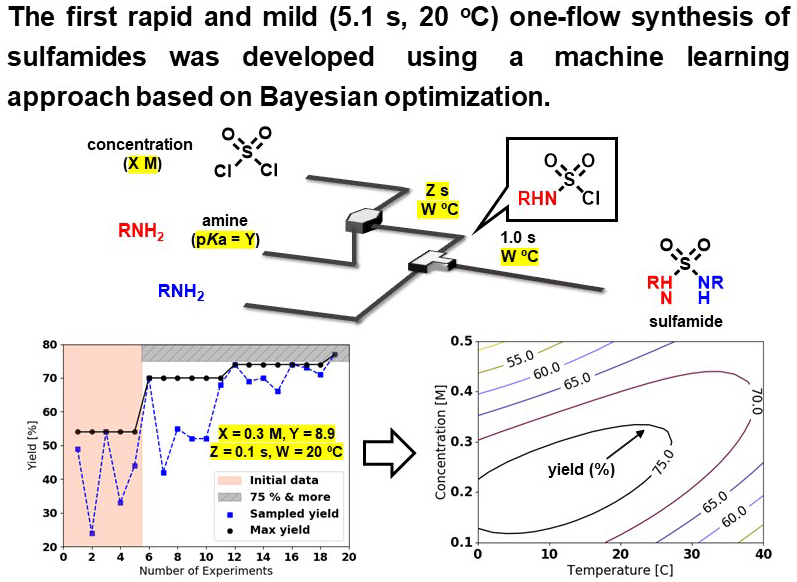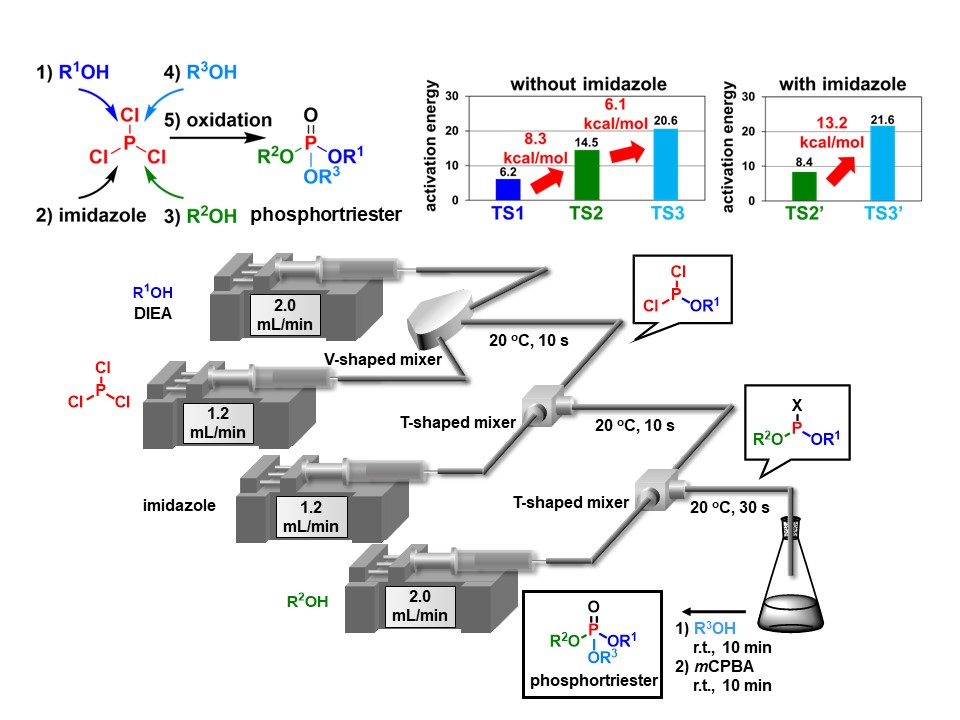Optimization of Reaction Conditions Using Machine Learning
The use of machine learning is increasingly important to rapidly identify optimal solution in various scientific field. In particular, Beyesian optimization (BO) is regarded as an efficient approach that can identify optimal reaction conditions using a restricted number of data. Despite demonstrated potential of BO, applications of BO-based approaches in synthetic organic chemistry remain limited. We achieved the first rapid and mild (5.1 s, 20 oC) one-flow synthesis of unsymmetrical sulfamides from inexpensive sulfuryl chloride. Undesired reactions were successfully suppressed and the risk in handling sulfuryl chloride was minimized by the use of micro-flow technology. BO enabled the identification of targeted reaction conditions based on a small number of experiments (<20). We have shown that BO not only yields the optimal reaction conditions but also produces GP models that provide accurate multi-variate relationships between the reaction parameters and the reaction yield. These relationships can be used for gaining valuable insights into reactions that can lead to scientific discoveries and design of efficient chemical processes. This is a collaborative work with Tokyo Tech, Kanazawa University, and British Columbia University.
Chem. Methods 1, (11), 484-490 (2021).

Synthesis of Phosphotriesters
Phosphotriesters are important as intermediates in oligo nucleotide synthesis, prodrugs, drug candidates, pesticides, flame retardants, and plasticizers. Almost all the organophosphorus compounds have been synthesized from inexpensive and readily available phosphorus trichloride. However, it was difficult to synthesize phosphotriesters via sequential introduction of three different alcohols against phosphorus trichloride because over nucleophilic attack of alcohols readily occurs due to high electrophilicity of phosphorous trichloride. Interestingly, the risk of overnucleophilic attack during introduction of the second alcohol is higher than that during introduction of the first alcohol. The addition of imidazole suppress the undesired overnucleophilic attack during introduction of the second alcohol. However, although these are fundamental issues in organophosphorus chemistry, detailed explanations were offered neither for the decreased selectivity in the absence of imidazole and nor for the improved selectivity in the presence of imidazole. We developed micro-flow synthetic approach that enabled rapid synthesis of phosphotriesters via sequential introduction of three different alcohols against phosphorus trichloride. We also proposed reasons for the decreased selectivity in the absence of imidazole and for the improved selectivity in the presence of imidazole based on DFT calculation. This is a collaborative work with Tokyo Tech and Kanazawa university.
Chem. Eur. J. 28, (37), e202200932, (2022).

We have also reported other studies combining machine learning, theoretical calculation, and microflow synthesis!
Development of a microflow amide synthesis using multi-objective Bayesian optimization (in collaboration with Professor Lapkin’s group at the University of Cambridge)
React. Chem. Eng. 9, (3), 706-712, (2024).
Microflow synthesis of asymmetric sulfamides and sulfamate esters. The effect of amines on the reaction was analyzed using machine learning.
Org. Lett. 26, (14), 2739-2744, (2024).
Development of a microflow sequential coupling and cyclization using Bayesian otptimization. The key factors were examined (in collaboration with Dr. Shusaku Asano at Kyushu University).
Bull. Chem. Soc. Jpn. 98, (4), uoaf022, (2025).